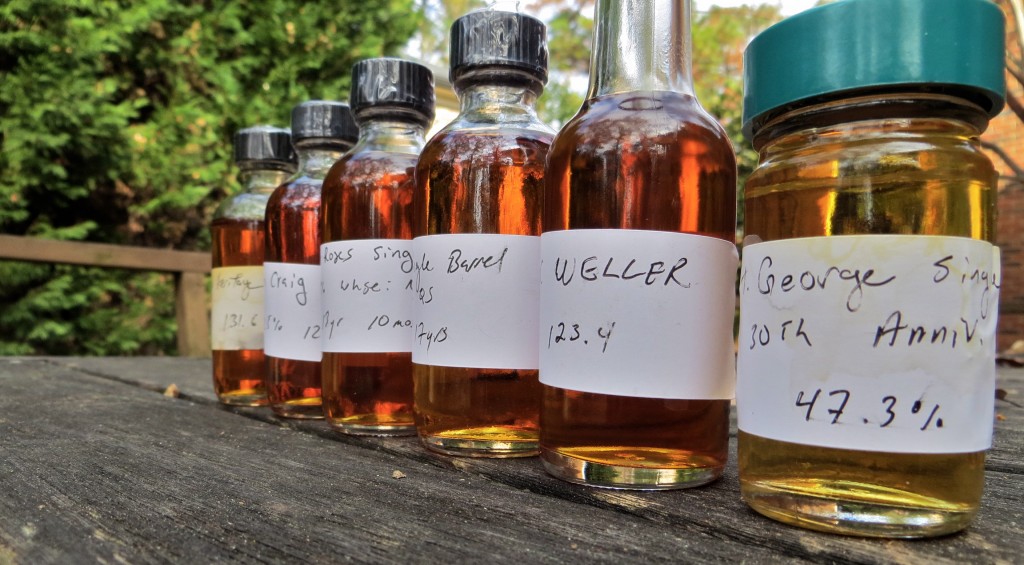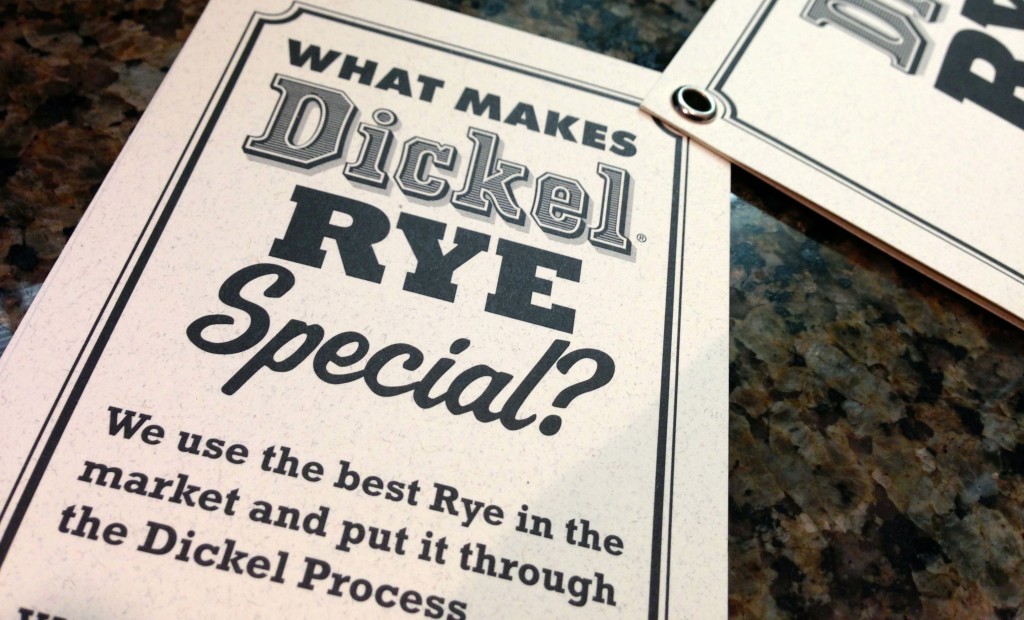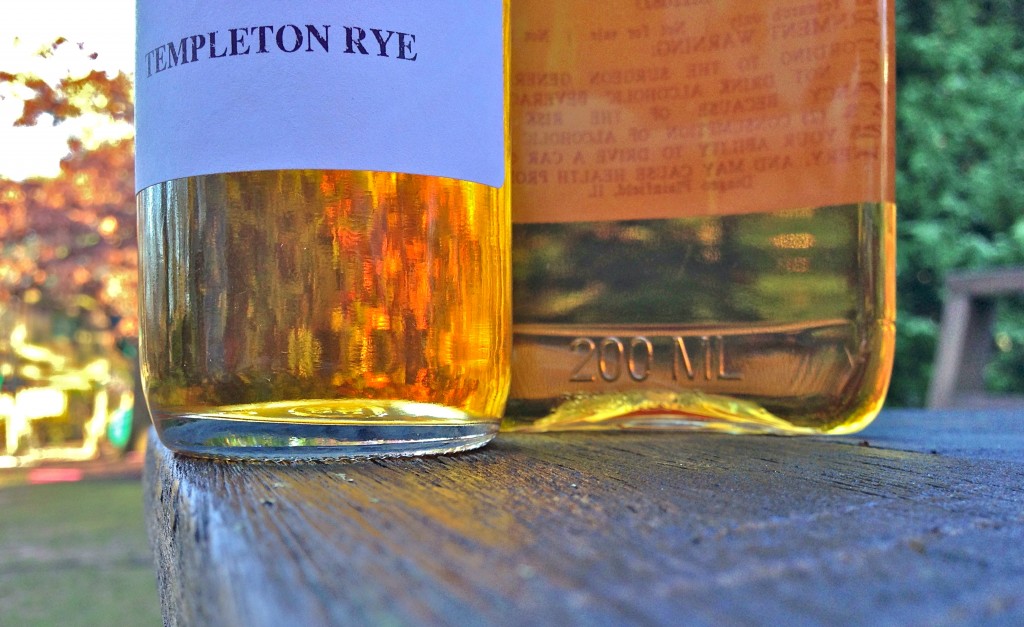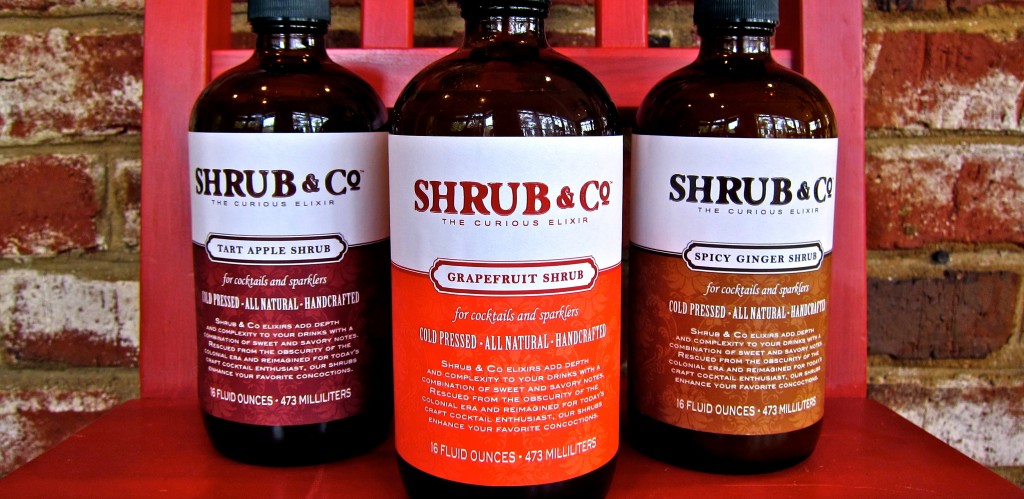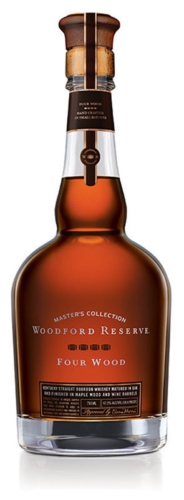
What is one to do when a friend sends samples of six rare whiskies? Savor just one at a time, patiently focusing on one a night? Or line ’em up, compare and contrast, push and prod (and yes, savor, too)? I chose the latter, and it made for an epic tasting night.
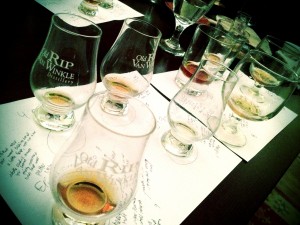 I won’t go into great detail here on the backstory of each of these whiskies – for the most part, these are not bourbons you are going to find on the shelf of your local store – some were direct from the distilleries’ gift shops, some are limited releases that barely see the shelf, and one is a very special release celebrating the 30th anniversary of one of America’s leading craft distillers. I (almost) feel bad even talking about them, since there’s not much you can do other than to make a mental note in case you ever come across one of these bottles.
I won’t go into great detail here on the backstory of each of these whiskies – for the most part, these are not bourbons you are going to find on the shelf of your local store – some were direct from the distilleries’ gift shops, some are limited releases that barely see the shelf, and one is a very special release celebrating the 30th anniversary of one of America’s leading craft distillers. I (almost) feel bad even talking about them, since there’s not much you can do other than to make a mental note in case you ever come across one of these bottles.
In addition to the samples pictured above, I also threw in two comparison bottles – good old Pappy Van Winkle 15 year old (bottled in 2008) and a last year’s version of the William Larue Weller, just to see how these samples stacked up against two proven bourbons.
To help compare and rate these whiskies, a friend (Decatur Wine & Food Dude) and I split them up into two groupings of four – one grouping with the wheated whiskies and a wheated/rye blend, and another grouping with the other whiskies. We sipped and circled back to compare these outstanding whiskies to each other. Here are a few quick notes, with each whiskey listed in order of personal preference on this particular night. I must say, we were surprised at how well some whiskies came across, and at how others couldn’t quite keep pace:
William Larue Weller Kentucky Straight Bourbon Whiskey, 2011 Release, 133.5 Proof, approx. $70 retail
Rating: WOW*
The bourbon of the night – this William Larue Weller came across as a class above, with a nose that sings with power, citrus in the background keeping it real. It is STRONG but in balance. Staggeringly good bourbon of the highest degree. Showing even better now than it did when I first opened this bottle last year.
St. George Single Malt Whiskey, 30th Anniversary Edition, Bottle 689/715, 94.6 Proof, approx. $400 retail
Rating: WOW
This is an incredibly unique whiskey, and one that stands apart from any bourbon as a wholly different animal. The nose is that of an aged riesling auslese (seriously, if you told me this was an old riesling, I would have believed you), floral, nutty and sweet, with a prominent note of pears. The pear brandy barrel aging dominates here (in a very good way), like a great caramel pear dessert. Unique and delightful.
Four Roses Single Barrel, 13 years and 10 months old, Warehouse NS, Barrel 16-4B, OBSK (35% rye), 126 Proof, approx. $70 retail
Rating: WOW
This Four Roses is very refined, with a somewhat shy nose, but one that speaks of elegance and harmony. There’s a bit of wood here, but baking bread comes to the fore, subtle candied orange, floral notes, and a fruity sweetness that holds the heat in check. This is pretty, lively stuff, not nearly as powerful as the Weller mentioned above, but almost as impressive in its own way. Beautiful.
Elijah Craig, 12 years old, Barrel Strength, Kentucky Straight Bourbon Whiskey, 128.5 Proof, approx. $75 retail
Rating: WOW
This one outperformed expectations, even though I am a fan of Elijah Craig. Heavy spice and gingerbread on the nose. With some water, the caramel and orange notes emerge more strongly. Deep brown sugar/caramel, the strength is well integrated, and with water (again) becomes velvety smooth and thick. This is a prototypical/textbook great bourbon. Very impressed.
Pappy Van Winkle’s Family Reserve Kentucky Straight Bourbon Whiskey, 15 Years Old, 2008 bottling, 107 Proof, approx. $70 retail
Rating: WOW
Well, Pappy didn’t win on this night, but still showed well. Not dissimilar to the ’11 Weller, this Pappy showed a darker, deeper harmony, but didn’t reach the same heights.
2012 Parker’s Heritage Collection Kentucky Straight Bourbon Whiskey, 131.6 Proof, approx. $80 retail
Rating: Excellent
A notch below the previous whiskies, the 2012 Parker’s has a hot, cinnamon nose that is dominated by the heat of its barrel proof. Candied apples and a fruity profile set it apart, though, as a nice bridge between sweet and spicy.
William Larue Weller Kentucky Straight Bourbon Whiskey, 2012 Release, 123.4 Proof, approx. $70 retail
Rating: Good Stuff
The 2012 did not show nearly as well as the 2011, with a more muted nose. Sweeter up front, and sharper through the finish than the 2011. Water brings it into balance, but this simply did not compare to the 2011 version. Still good, but not up to expectations.
Four Roses Single Barrel, 17 years old, Warehouse QS, Barrel 78-2C, OBSV (35% rye), 101.6 Proof, approx. $70 retail
Rating: Good Stuff
Maybe the most disappointing sip of the night, this one felt a bit tired, with a much more muted nose and an herbal/cough-drop quality. It starts out very smooth, with mint and fruit notes, but the finish is hot and tannic. Too much time in the wood?
So, an epic tasting night. Some amazingly good and rare whiskey. Thanks especially to Jason at Sour Mash Manifesto for his generosity.
*******************************
* Thirsty South Rating Scale:
Wow – among the very best: knock-your-socks-off, profound, complex liquid gold!
Excellent – exceptional in quality and character, worth seeking out, highly recommended
Good Stuff – solid expression of its type/varietal, enjoyable and recommended
Fair – fairly standard or exhibiting obvious though minor flaws
Avoid – move away folks, nothing to see here, a trainwreck
